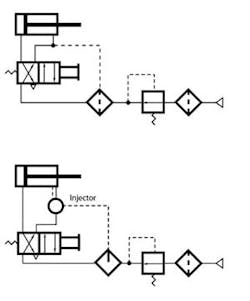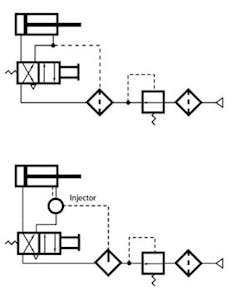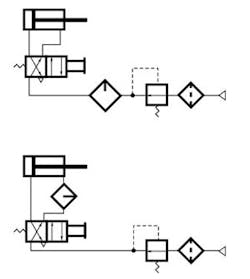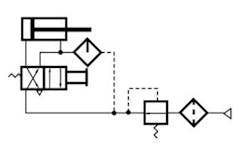Air lubrication circuits
Downstream lubricaton
The upper drawing shows a conventional circuit: the lubricator mounts ahead of the control valve. In the lower drawing, air flow through the directional valve lubricates the cylinder. The valve is lubricated when the cylinder exhausts.
Oil injection
In the upper circuit, oil is injected into the head end of the cylinder each time the control valve cycles. In the bottom circuit, oil is injected into the cylinder through a small tube inside the air line.
Lubricating short-stroke cylinders
In this circuit, the lubricator bypasses the control valve and lubricates the cylinder while its rod retracts. When the rod extends, exhaust air from the head end lubricates the control valve.




